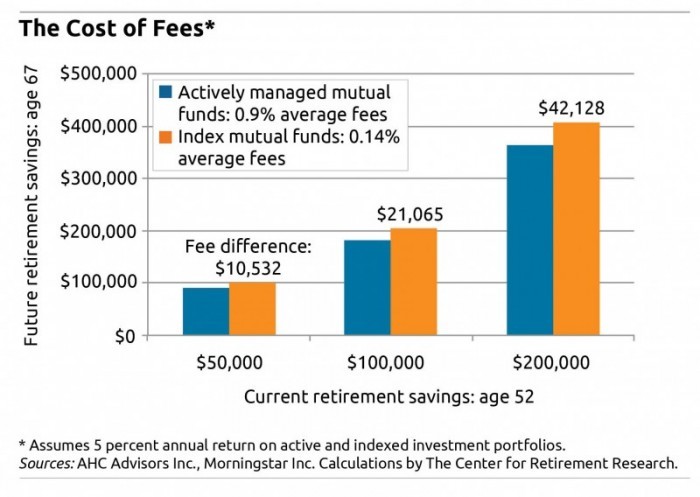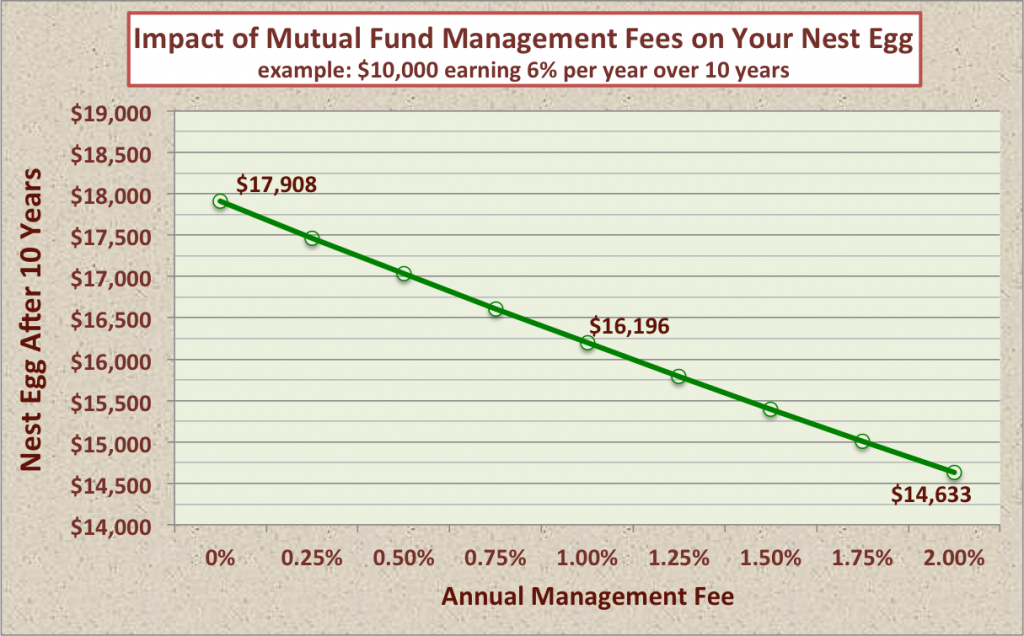Understanding Mutual Fund Fees
Post on: 23 Июнь, 2015 No Comment

Basics for Beginners To make the best decision when investing in mutual funds, you need to understand how the basic mutual fund fees work.
Loads
When you’re buying a mutual fund, one of the most important things you need to know is the amount of fees that will be deducted from your investment or paid by you. These fees can have a real impact on the return you make.
First, there are fees that some mutual funds charge as commissions when you buy or sell a mutual fund. These fees are called loads and are calculated as a percentage of the amount you’re buying or selling. A mutual fund can be:
- a front-load fund, meaning that you pay a certain percentage of your purchase as a commission up front
- a back-load fund, meaning you pay the commission (as a percentage) when you sell all or part of your holdings in the fund
- a constant-load fund that takes out fees on a regular basis
- or a no-load fund, meaning you pay no commission. This is the only type of mutual fund the average investor should buy.

It’s not uncommon for a load to be as high as 5.75%, so if you invested $10,000 in one of these front-load funds, you would lose $575 immediately. Back-load funds are no less painful. Either you see the fees deducted from what you thought were your earnings or, worse yet, you may lose money on your investment and still have to cough up the back-load funds when you sell.
There are excellent mutual funds with no load, such as Vanguard and Fidelity funds and many others. These funds often out-perform the loaded funds.
See How to Spot a Loaded Fund to learn the sometimes subtle signs that you are being sold a loaded fund.
Expense Ratio
Before buying a mutual fund, investigate the fund’s expense ratio. This is the percentage of the fund’s assets that are deducted from earnings each year to cover the fund’s operating expenses. Some funds have reasonable fees not exceeding 1%. Others are 3% or more. This comes right out of your earnings, so the lower the fee, the higher your return.
The expense ratio is made up of the 12b-1 fee. which is a fee to cover the marketing of the fund to potential investors, and the management fee. which pays the salaries of the fund’s managers. Not all funds charge a 12b-1 fee, but if they do, they’re legally required to list it in the prospectus (the formal document offering to sell stock to the public).
Some funds, such as Vanguard, do an excellent job of keeping fees low so that as much as possible of the income made by the fund is returned to the investors, not paid to the managers. To put another fund’s fees in perspective, compare them to Vanguard’s.
You can research the fees and loads of any mutual funds online on sites like Morningstar .














